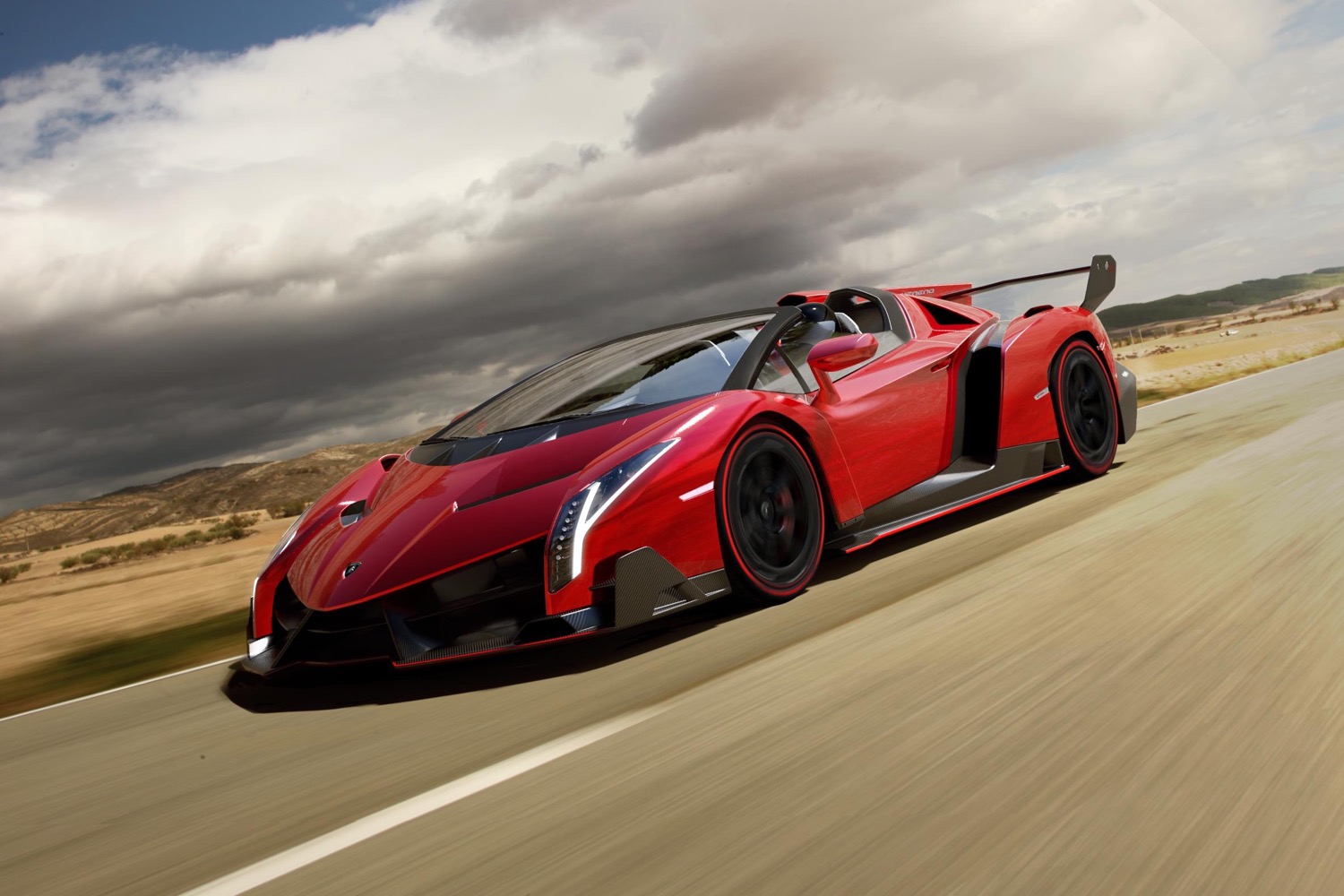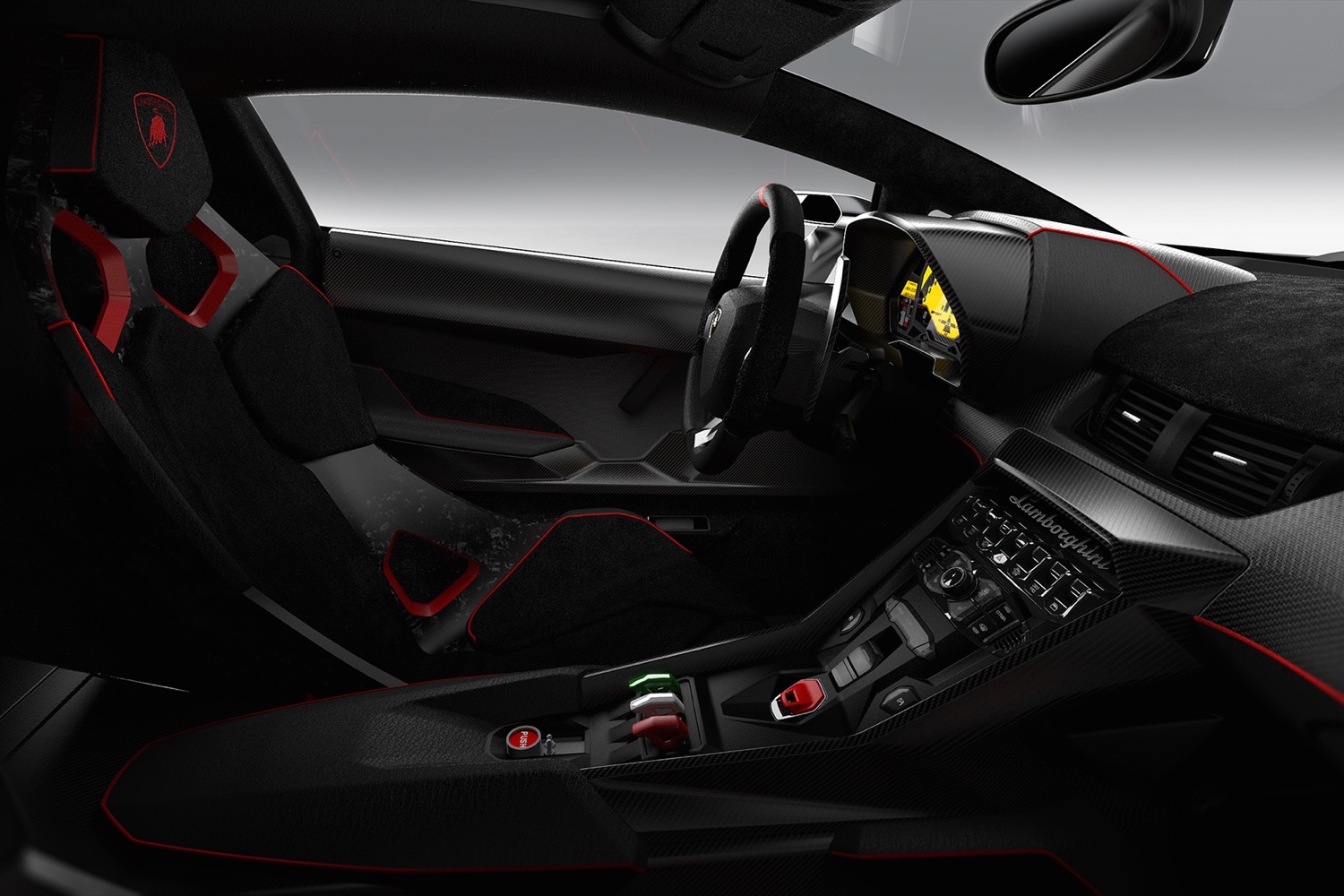.jpg)
About This Model
The Veneno is a limited-production model distinct from the rest of the Lamborghini lineup.
Raging Bull
The Lamborghini Veneno is a very special car. Unveiled at the 2013 Geneva Motor Show, it was built to celebrate Lamborghini’s 50th birthday, and is one of the most extreme cars in the company’s illustrious history. It’s also one of the most rare, with just three coupes and nine roadsters built.
Like all Lamborghinis, the Veneno is named after a fighting bull. Veneno is most famous for goring a matador to death in 1914, and that pretty much tells you everything you need to know about this car’s attitude. Using the Aventador’s carbon-fiber monocoque and V12 engine as starting points, Lamborghini created something truly evil.
Powertrains and Performance
The Veneno takes Lamborghini engineering to the extreme, with a focus on optimum aerodynamics, cornering stability, and speed unconstrained by the needs of higher-volume cars.
Underneath the multi-faceted skin is a 6.5-liter V12 engine based on the unit used in the Aventador. Tricks like larger air intakes and a new exhaust system allowed Lamborghini to extract 740 horsepower, which is sent to all four wheels through a seven-speed single-clutch automated transmission. The result is 0 to 62 mph in 2.8 seconds (2.9 seconds for the roofless roadster), and a top speed of 221 mph, according to Lambo.
.jpg) Lamborghini calls the Veneno a street-legal racecar, and gave it the hardware to back up that claim. The seven-speed transmission includes five programmable modes that adjust the ferocity of shifts, and a pushrod suspension system. The body also helps with performance, thanks to a design carefully shaped for minimum drag and maximum downforce.
Lamborghini calls the Veneno a street-legal racecar, and gave it the hardware to back up that claim. The seven-speed transmission includes five programmable modes that adjust the ferocity of shifts, and a pushrod suspension system. The body also helps with performance, thanks to a design carefully shaped for minimum drag and maximum downforce.
Features and Trims
The Lamborghini Veneno was built in two-seat coupe and roadster variants, priced around $3.9 million. But if you don’t already have one, you probably never will. Just nine roadsters and three coupes were built, and all sold out immediately.
Buyers who shelled out for that high price tag were mostly paying for exclusivity. The Veneno is built purely for performance, but that means it’s light on luxuries. The interior is full of carbon fiber, and the driver and passenger get some very supportive bucket seats, and there’s a G-meter on the Aventador-like dashboard, but other than that the Veneno really is like a racecar in its Spartan nature.
Design
When Lamborghini designed the Veneno, it needed not only a jaw-dropping show car to help celebrate its 50th birthday, but also a supercar that could match the performance of the most elite competition. The key to fulfilling both missions was the Veneno’s extreme styling and carbon fiber construction.
The pointed front end has large channels that guide air around it, while the Y-shaped headlights reach back to the scissor doors, giving the car an aggressive look. Like today’s prototype racecars, the fenders are also separated from the rest of the body. They make the Veneno look more muscular, but also make room for large openings that bring cooling air to the engine. The underbody is smooth and transitions into a massive rear diffuser, which is integrated with the very complex rear end design.
 The taillights repeat the “Y” theme in more dramatic fashion, with horizontal elements stretching across the entire back of the car. The rear engine cover is decorated with six wedge-shaped openings, which Lamborghini claims help dissipate heat. Of course, it’s also hard to miss the huge adjustable rear spoiler and “shark fin,” the latter another piece borrowed from prototype racers. The Veneno rides on staggered wheels, with 20-inch rims in front, and 21-inch rims in the back.
The taillights repeat the “Y” theme in more dramatic fashion, with horizontal elements stretching across the entire back of the car. The rear engine cover is decorated with six wedge-shaped openings, which Lamborghini claims help dissipate heat. Of course, it’s also hard to miss the huge adjustable rear spoiler and “shark fin,” the latter another piece borrowed from prototype racers. The Veneno rides on staggered wheels, with 20-inch rims in front, and 21-inch rims in the back.
Like the Aventador, the Veneno is based on a carbon fiber-reinforced polymer monocoque, with aluminum subframes front and rear. All exterior panels are CFRP as well, and that makes a big difference in terms of weight. The Veneno has a dry weight of just 3,190 pounds, which is 275 pounds lighter than an Aventador and allows for a power-to-weight ratio of 4.25 pounds per horsepower.
 The focus on carbon fiber carries over to the interior. The monocoque chassis is exposed in the area of the central tunnel and sills. The two lightweight bucket seats are made from Lamborghini’s patented Forged Composite material. Instead of traditional fabric, the interior is covered in a woven carbon-fiber material called CarbonSkin. This material is treated with a special resin that stabilizes the fiber structure, but still allows the material to remain supple enough to behave like a fabric.
The focus on carbon fiber carries over to the interior. The monocoque chassis is exposed in the area of the central tunnel and sills. The two lightweight bucket seats are made from Lamborghini’s patented Forged Composite material. Instead of traditional fabric, the interior is covered in a woven carbon-fiber material called CarbonSkin. This material is treated with a special resin that stabilizes the fiber structure, but still allows the material to remain supple enough to behave like a fabric.
Safety
Despite its radical design, Lamborghini claims the Veneno is fully street legal. It does include certain features that are mandatory in the U.S., like stability control and airbags.
Bottom Line
The Lamborghini Veneno is a very special car from a company that already makes some of the most exclusive and highly desirable cars in the world.
For more information on this and other Lamborghini models, contact us online or visit 3Birds Template at 505 W. Franklin St., Chapel Hill, NC 27516.
Image: Lamborghini
